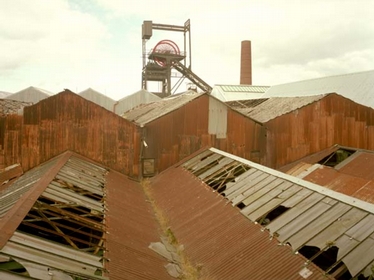The Story of Scottish Coal
View in 1999 of the pithead buildings at Lady Victoria Colliery, near Edinburgh. This model colliery survived after closure in 1981, and is now the Scottish Mining Museum.
© Crown copyright: RCAHMS, SC 758228, 1999
© Crown copyright: RCAHMS, SC 758228, 1999
The last of the surviving headgear, and the most important surviving historical coal mining complex in Scotland is at Lady Victoria Colliery in Newtongrange, to the south of Edinburgh.
It is a fine example of a Victorian model colliery, dating from the period when the scale of mining increased as deeper shafts were sunk to reach new productive coal measures at much greater depths.
In the 1890s, Lady Victoria had the deepest and widest shaft of any coal mine in the UK, and with the help of leading mining technology both from Wales and the west of Scotland, became a very productive pit, producing several types of high-quality coal. These included parrot coal, which was highly valued because of the large quantities of gas that it produced.
Most of the colliery buildings are built from red brick and a combination of steel frames and sheet metal. This photograph shows that a lot of the steel work is difficult to maintain, and at the time it was built, was not expected to survive for over 100 years.
It is a fine example of a Victorian model colliery, dating from the period when the scale of mining increased as deeper shafts were sunk to reach new productive coal measures at much greater depths.
In the 1890s, Lady Victoria had the deepest and widest shaft of any coal mine in the UK, and with the help of leading mining technology both from Wales and the west of Scotland, became a very productive pit, producing several types of high-quality coal. These included parrot coal, which was highly valued because of the large quantities of gas that it produced.
Most of the colliery buildings are built from red brick and a combination of steel frames and sheet metal. This photograph shows that a lot of the steel work is difficult to maintain, and at the time it was built, was not expected to survive for over 100 years.


